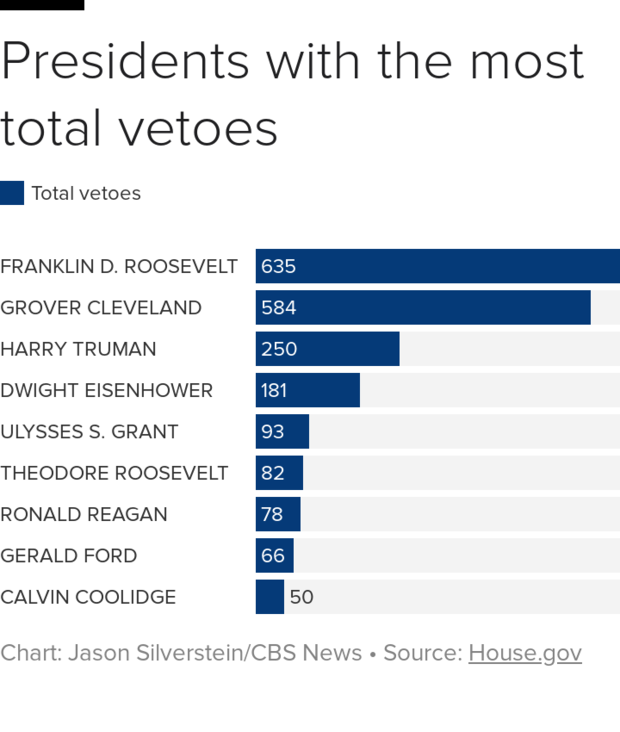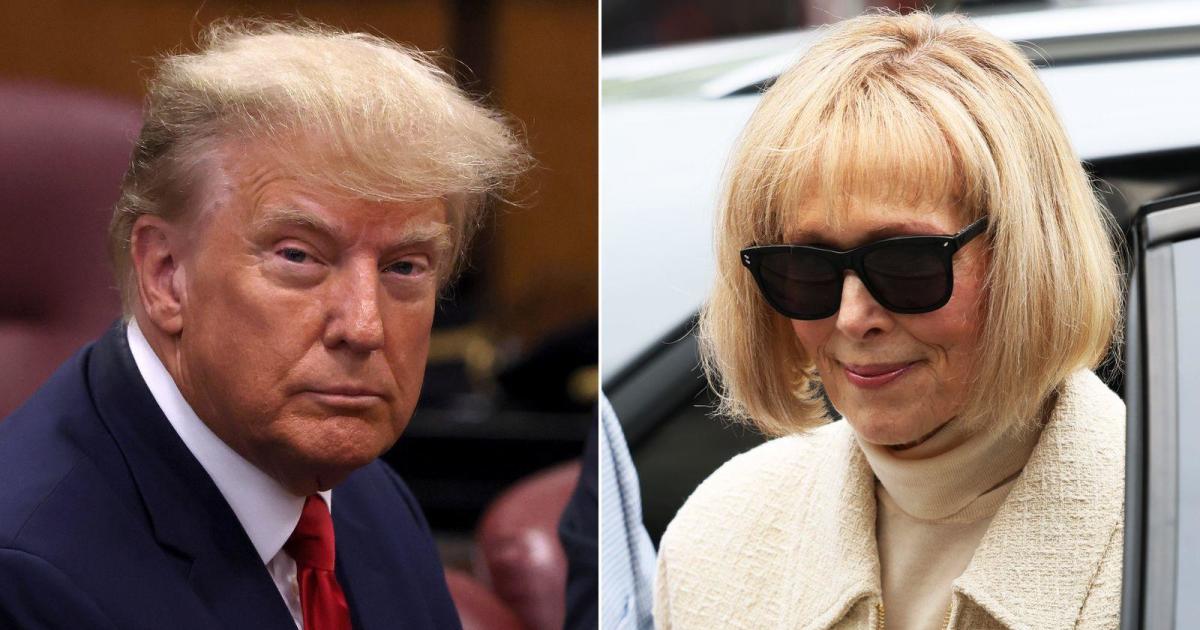Presidential vetoes: How they work, who issued the most and how Congress stops them
President Trump is preparing to issue his first veto after Congress voted to reject his national emergency declaration along the southern border. So far, Mr. Trump has been one of the most restrained presidents in modern history when it comes to veto power.
Mr. Trump is right now the only president in nearly 140 years with no vetoes to his name. He is also among the few in the past 40 years to get this far into his presidency without one. Presidents Barack Obama, George H.W. Bush and Ronald Reagan all had vetoes within their first year in office.
It was once common for presidents to deliver dozens of vetoes, and for Congress to overturn a few of them. Some presidents racked up hundreds. But presidential vetoes and congressional overrides have been steadily dropping for decades.
With Democrats now in control of the House after two years of Republicans controlling Congress, Mr. Trump could begin breaking out his veto pen more often.
Here's what you need to know about the president's veto powers:
How do vetoes and veto overrides work?
Article I of the Constitution grants the president authority to reject legislation passed by Congress in two ways: a "regular veto" and a "pocket veto."
After Congress passes a bill, the president has 10 days (excluding Sundays) to review the legislation. He can sign the bill and send it back to Congress, at which point it becomes law. He can also do nothing, and if Congress is in session after 10 days, the bill becomes law automatically.
In a regular veto, the president rejects the bill by sending it back to Congress without his signature. Congress can then attempt to override the veto, which requires a two-thirds vote in the House and Senate. If an override vote is successful, the legislation becomes law over the president's objection.
A pocket veto can't be overridden. The Constitution's 10-day window to review legislation includes an exception if Congress is adjourned at the deadline. With a pocket veto, the president simply doesn't sign the bill, and doesn't return it to Congress, meaning it doesn't become law. Lawmakers must then take up the legislation once they reconvene and either hope that the president approves a revision, or that his next veto can be overridden.
Presidents are more likely to veto bills when at least one chamber of Congress is controlled by the other party, according to data from the American Presidency Project and the University of California, Santa Barbara. For example, President Barack Obama issued just two vetoes in his first two years, when Democrats held majorities in the House and Senate. In his final two years, with Republicans controlling both chambers, he issued 10.
Which president issued the most vetoes?
President Franklin D. Roosevelt, a Democrat, has more vetoes to his name than the majority of other presidents combined. According to Senate records, Roosevelt handed down a total of 635 vetoes — 372 regular, 263 pocket — during his 12 years in office. Those vetoes stretched across a broad swath of issues, including land rights, military pensions, federal budgeting, fertilizer regulation and whether retailers in Washington, D.C., could buy beer on credit.
Ironically, FDR had Democratic majorities in the Senate and House through all four of his terms.
Only three other presidents had vetoes in the hundreds:
- Grover Cleveland: 584 total; 346 regular, 238 pocket
- Harry Truman: 250 total; 180 regular, 70 pocket
- Dwight D. Eisenhower: 181 total; 73 regular, 108 pocket
The last president to come close to 100 was Ronald Reagan, who had 78 vetoes across his two terms. The number of vetoes has dropped for every president since then: George W. Bush and Obama each delivered just 12.
The last president to issue zero vetoes was James Garfield, who was president for less than seven months before his death in 1881. John Adams, Thomas Jefferson, John Quincy Adams, William Henry Harrison and MIllard Fillmore also issued zero, according to the American Presidency Project's database.
Which president did Congress override the most?
It's rare for Congress to override a presidential veto. Presidents have vetoed 2,574 bills in U.S. history, according to House records. Out of those, Congress overrode only 111.
President Andrew Johnson — the first president to be impeached — faced the most opposition from Congress. He issued 29 total vetoes, and Congress overrode 15 of them.
Behind him, Truman and Gerald Ford are tied for second, both with 12 overrides each. The resistance to Ford is notable because he was only in office for a little over two years.
Every other president has faced fewer than 10 overrides, no matter how many times they vetoed. FDR, the all-time record-holder, saw only nine of his 635 vetoes defeated in Congress, including the first revenue law passed without the president's approval.





